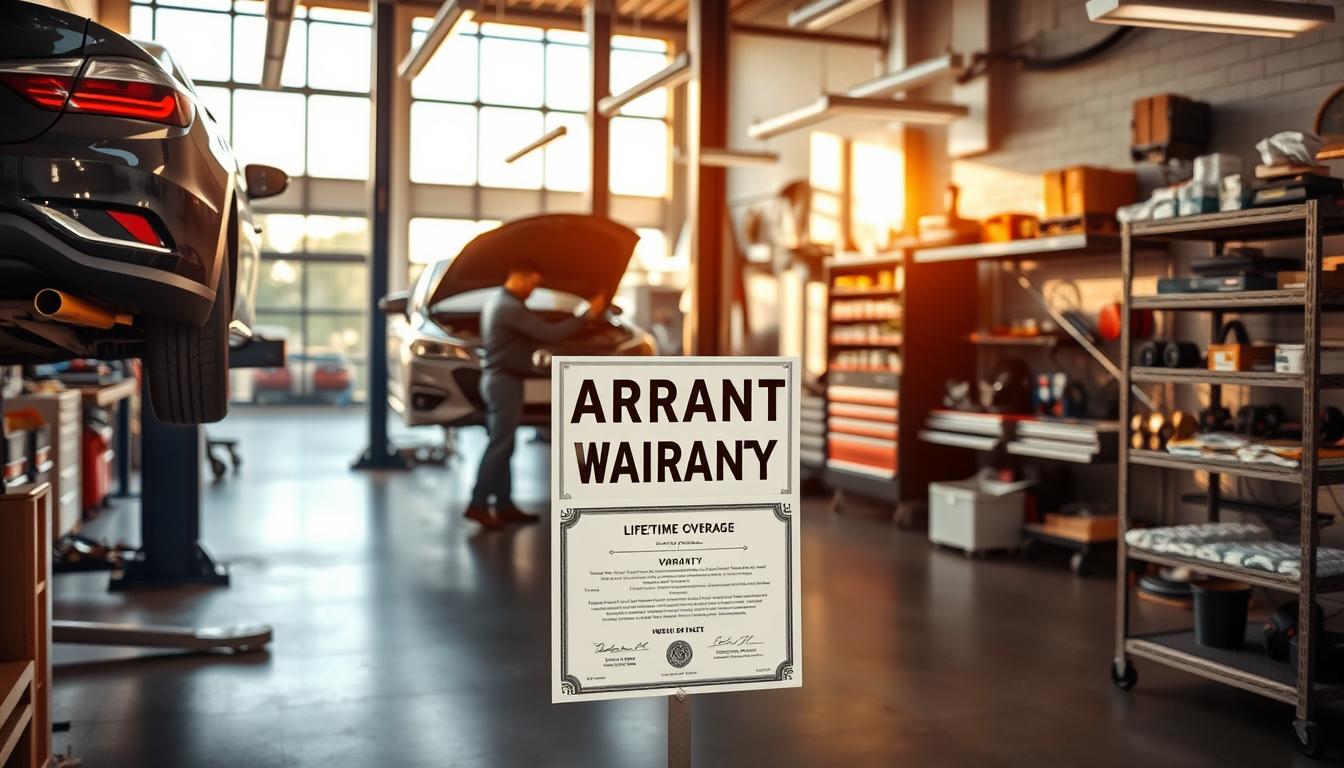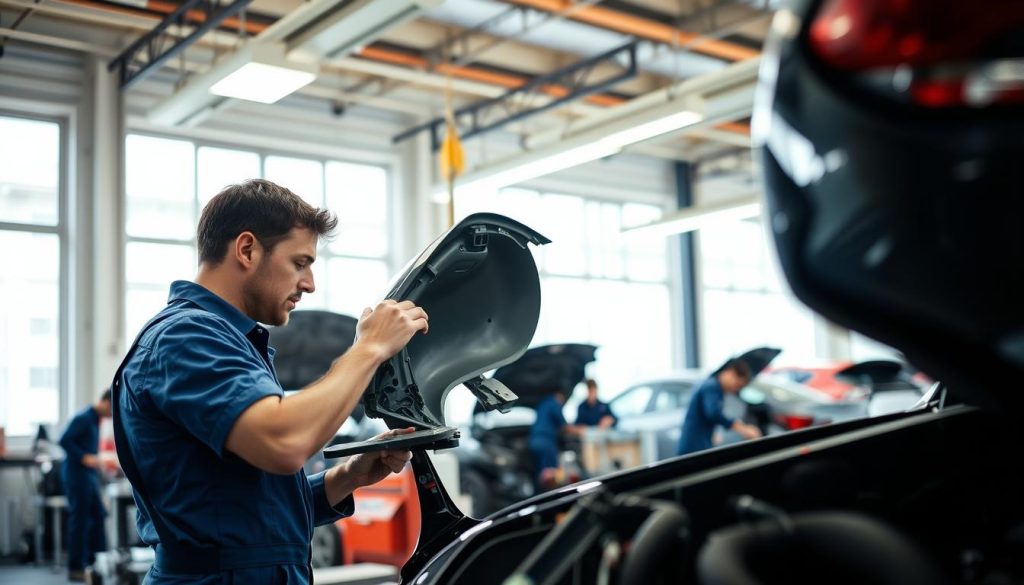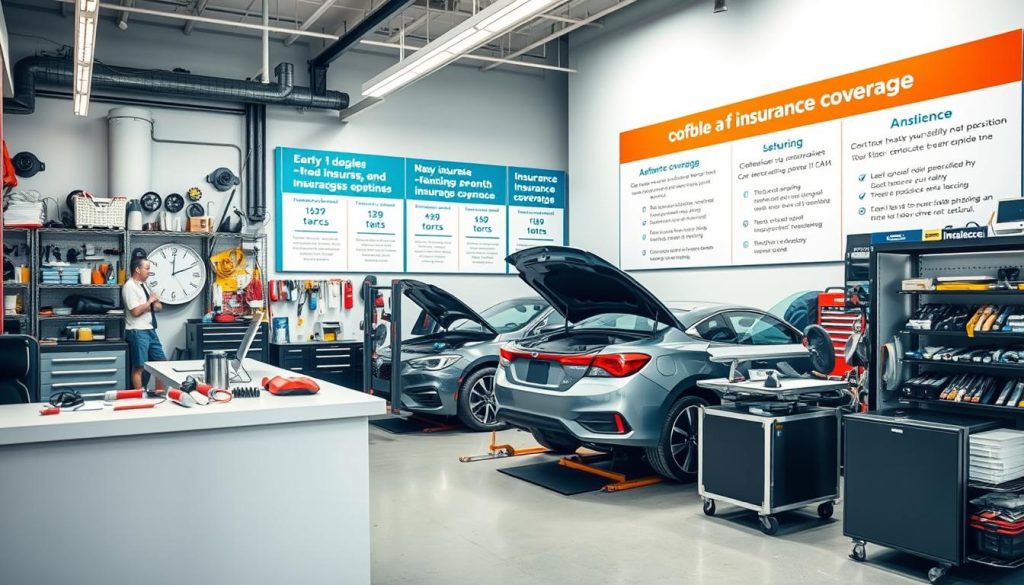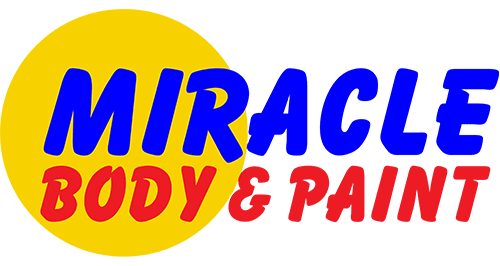
The Importance of a Lifetime Warranty on Collision Repairs

What To Do Immediately After a Car Accident
After being involved in an accident, understanding your auto insurance coverage and the process of collision repair is crucial. At Miracle Body and Paint, with two convenient locations in San Antonio, we guide you through this complex process.
Navigating the aftermath of a collision can be overwhelming, but knowing what to expect from your vehicle insurance provider and the collision repair process can significantly ease the burden. This article aims to provide you with essential insights into managing your insurance claims and getting your vehicle back on the road.
Key Takeaways
- Understanding your auto insurance policy is key to a smooth collision repair process.
- Knowing the steps involved in collision repair can help manage expectations.
- Miracle Body and Paint is committed to guiding you through every step of the repair process.
- Effective communication with your insurance provider is crucial.
- Choosing the right repair shop, like Miracle Body and Paint, ensures quality and reliability.
Understanding Vehicle Insurance Basics
Understanding the basics of vehicle insurance is essential for making informed decisions about your coverage. Vehicle insurance is a critical component of car ownership, providing financial protection against unforeseen events such as accidents or theft.
What is Vehicle Insurance?
Vehicle insurance, also known as auto insurance, is a type of coverage that helps protect you financially in the event of an accident or other damage to your vehicle. It is required by law in most states, and having the right coverage can make a significant difference in your financial well-being. Auto insurance policies typically cover a range of risks, including liability, collision, and comprehensive damage.
The primary purpose of vehicle insurance is to provide financial protection against physical damage or bodily injury resulting from traffic collisions and against liability that could also arise from incidents in a vehicle.
Key Types of Vehicle Insurance Coverage
There are several key types of vehicle insurance coverage that drivers should be aware of. These include:
- Liability Coverage: This type of coverage is mandatory in most states and helps pay for damages to others in an accident.
- Collision Coverage: This coverage helps pay for damages to your vehicle resulting from a collision, regardless of who is at fault.
- Comprehensive Coverage: This type of coverage protects against damages not related to accidents, such as theft, vandalism, or natural disasters.
- Personal Injury Protection (PIP): PIP coverage helps pay for medical expenses for you and your passengers, regardless of fault.
How Premiums Are Calculated
Vehicle insurance premiums are calculated based on a variety of factors, including your driving history, age, location, and the type of vehicle you drive. Insurance companies use complex algorithms to assess the level of risk associated with insuring you and your vehicle. Factors such as a clean driving record, good credit score, and bundling policies can help lower your premiums.
Understanding how premiums are calculated can help you make informed decisions about your coverage and potentially lower your costs. It’s essential to shop around and compare rates from different insurance providers to find the best coverage for your needs.
The Importance of Collision Coverage
Understanding the role of collision coverage in vehicle insurance is crucial for making informed decisions about your policy. While not mandated by law, collision coverage is often required for leased or financed vehicles, highlighting its significance.
What Does Collision Coverage Include?
Collision coverage is designed to cover the costs associated with repairing or replacing your vehicle in the event of an accident, regardless of who is at fault. This type of insurance coverage is essential for protecting your financial assets against the potentially high costs of vehicle repairs.
It typically includes damages from:
- Collisions with other vehicles or objects
- Rolling over
- Crashing into a stationary object
When to Consider Collision Coverage
Deciding whether to opt for collision insurance depends on several factors, including the value of your vehicle, your financial situation, and whether you’re leasing or financing your vehicle. If your vehicle is new or of high value, having collision coverage can be particularly beneficial.
Pros and Cons of Collision Insurance
Like any insurance coverage, collision insurance has its advantages and disadvantages. On the positive side, it provides financial protection against the costs of repairing or replacing your vehicle after an accident. However, it also comes with an additional premium cost, and there’s a deductible that you must pay out of pocket before the insurance kicks in.
The key pros include:
- Financial protection against repair or replacement costs
- Peace of mind knowing you’re covered in case of an accident
And the cons:
- Additional premium costs
- Deductible payments
Ultimately, the decision to include collision coverage in your vehicle insurance policy should be based on a careful consideration of these factors, ensuring it aligns with your financial situation and vehicle ownership needs.
Filing a Claim: Step-by-Step Guide
Navigating the claims process can be challenging, but knowing what to expect can make all the difference in the outcome. Filing a claim after a collision involves several crucial steps that, when followed correctly, can make the experience less stressful and more efficient.
Preparing to File Your Claim
Before you begin the claims process, it’s essential to prepare by gathering all the necessary information. This includes details about the collision, such as the date, time, and location, as well as the parties involved. Having a clear and concise account of the incident will help streamline the process.
Additionally, it’s crucial to notify your insurance company as soon as possible after the collision. Most insurance providers have a specific timeframe within which you must report an incident to be eligible for a claim.
Gathering Necessary Documentation
Gathering the necessary documentation is a critical step in filing a claim. This typically includes a police report (if one was filed), photographs of the damage, and any witness statements. Having comprehensive documentation will support your claim and help your insurance adjuster assess the damage accurately.
You will also need to provide your insurance company with your policy number and other relevant details. Ensuring that you have all the required documents ready will expedite the claims process.
What to Expect During the Claims Process
Once you’ve filed your claim, the insurance company will assign an adjuster to your case. The adjuster’s role is to assess the damage to your vehicle and determine the necessary repairs. This may involve inspecting your vehicle and reviewing the documentation you’ve provided.
It’s essential to maintain open communication with your adjuster throughout the process. Be prepared to answer questions and provide additional information as needed. Understanding what to expect during the claims process can help manage your expectations and reduce stress.
- Your claim will be processed, and you will be informed of the outcome.
- If approved, your vehicle will be repaired according to the agreed-upon estimate.
- You may need to pay a deductible, depending on your insurance policy.
Choosing the Right Repair Shop
When it comes to collision repairs, selecting the right repair shop is crucial for ensuring quality workmanship and maintaining your vehicle’s integrity. The right shop can make all the difference in getting your vehicle back on the road quickly and safely.
Factors to Consider When Selecting a Repair Shop
Several key factors should guide your decision when choosing a repair shop. These include:
- Certification: Look for shops certified by reputable organizations, as they adhere to industry standards.
- Experience: Consider the shop’s experience with your vehicle’s make and model.
- Warranty: Check if the shop offers a warranty on their repairs.
The Benefits of Certified Repair Shops
Certified repair shops have undergone rigorous training and adhere to manufacturer specifications, ensuring high-quality repairs. The benefits include:
- Guaranteed workmanship
- Use of genuine or equivalent parts
- Compliance with safety standards

Checking Reviews and Reputation
A shop’s reputation can be a strong indicator of its reliability and quality of service. Check online reviews and ask for referrals to gauge the shop’s standing in the community. A reputable shop will have a history of satisfied customers and a transparent repair process.
By carefully considering these factors and doing your research, you can confidently choose a repair shop that will handle your collision repair needs effectively.
Understanding Repair Estimates
A repair estimate is more than just a quote; it’s a detailed breakdown of the repairs needed after a collision. Understanding what’s included in this estimate is vital for making informed decisions about your vehicle’s repair.
What’s Included in a Repair Estimate?
A comprehensive repair estimate typically includes a detailed list of the repairs required, the cost of parts, and labor costs. It should also specify the type of parts to be used (original equipment manufacturer (OEM) or aftermarket) and the labor rates. Ensuring that the estimate is detailed will help you understand the full scope of the work to be done.
When reviewing your estimate, look for a clear breakdown of the costs. This should include:
- Parts and materials needed for the repair
- Labor costs and the estimated time required for each task
- Any additional services, such as rental car fees or towing costs
Comparing Estimates from Different Shops
It’s advisable to get estimates from multiple repair shops to compare prices and services. Comparing estimates can help you identify the best value for your money. When comparing, pay attention to the level of detail in each estimate and the types of parts to be used.
When gathering multiple estimates, consider the following:
- The reputation and certification of the repair shop
- The level of detail provided in the estimate
- The total cost, including parts and labor
How to Spot Hidden Costs
Hidden costs can sometimes appear after the repair work has begun. To avoid surprises, carefully review the estimate for any mention of additional fees. Ask the repair shop about their policy on additional costs and how they communicate changes to the original estimate.
Some common hidden costs to watch out for include:
- Additional labor costs due to unforeseen damage
- Fees for rental cars or other supplementary services
- Costs associated with using OEM parts versus aftermarket parts
The Role of Insurance Adjusters
Understanding the role of insurance adjusters is essential for navigating the collision repair process smoothly and ensuring that your claim is handled efficiently.
Insurance adjusters play a crucial role in the claims process, acting as the intermediary between you and your insurance company. Their primary responsibility is to assess the damage to your vehicle and determine the extent of the coverage provided by your insurance policy.
What Does an Insurance Adjuster Do?
An insurance adjuster inspects the damage to your vehicle, assesses the cost of repairs, and determines whether the vehicle is a total loss. They review your insurance policy to understand what is covered and to what extent.
The adjuster will typically:
- Conduct a thorough inspection of the damage
- Take photographs and notes
- Obtain repair estimates from collision repair shops
- Negotiate the cost of repairs with the repair shop
How to Communicate with Your Adjuster
Effective communication with your insurance adjuster is key to a smooth claims process. Be prepared to provide detailed information about the incident, including any documentation or evidence you have collected.
Tips for communicating with your adjuster include:
- Be clear and concise about the damage and your concerns
- Ask questions if you’re unsure about any part of the process
- Keep a record of your communications, including dates and details discussed
Tips for a Smooth Adjustment Process
To ensure a smooth adjustment process, it’s essential to be proactive and responsive. Provide your adjuster with all the necessary information and documentation in a timely manner.
Additionally, consider the following:
- Understand your policy coverage before the adjuster’s assessment
- Keep detailed records of all correspondence and transactions related to your claim
- Be prepared to negotiate if you disagree with the adjuster’s assessment
The Collision Repair Process
A collision can be stressful, but understanding the repair process can help alleviate some of that stress. When your vehicle is damaged, it’s essential to know what to expect from the repair shop to ensure your car is restored to its original condition.
Common Repairs After a Collision
After a collision, the type of repairs needed can vary widely depending on the extent and nature of the damage. Common repairs include:
- Bodywork: Repairing or replacing damaged body panels, such as hoods, bumpers, and doors.
- Painting: Matching and applying paint to ensure a seamless finish.
- Mechanical Repairs: Fixing or replacing damaged mechanical components, such as suspension parts or engine mounts.
Understanding these common repairs can help you better navigate the repair process.
The Importance of Genuine Parts
Using genuine parts is crucial for maintaining your vehicle’s performance, safety, and overall value. Genuine parts are designed and manufactured by the vehicle’s original maker, ensuring a precise fit and adherence to the manufacturer’s standards.
The benefits of using genuine parts include:
- Quality Assurance: Genuine parts are built to the manufacturer’s specifications, ensuring reliability and durability.
- Safety: Genuine parts are designed to work seamlessly with your vehicle’s safety features, maintaining its overall safety.
- Warranty: Using genuine parts often comes with a warranty, providing peace of mind.
Timeframe for Collision Repairs
The timeframe for collision repairs can vary significantly based on the extent of the damage, the availability of parts, and the workload of the repair shop. On average, repairs can take anywhere from a few days to several weeks.
To manage your expectations, it’s essential to:
- Ask your repair shop for a detailed estimate of the time required for repairs.
- Understand that using genuine parts may sometimes extend the repair time due to potential delays in parts delivery.
- Stay in regular communication with your repair shop to get updates on the progress.
Auto Body Repairs and Insurance Coverage
Knowing what’s covered under your insurance policy can make a big difference in managing auto body repairs. When you’re dealing with the aftermath of a collision, understanding your insurance coverage can help alleviate some of the financial burdens.

What’s Typically Covered?
Most insurance policies cover auto body repairs to some extent. Typically, collision coverage is the part of your insurance policy that pays for damages to your vehicle resulting from a collision, regardless of who’s at fault.
- Repairs to the vehicle’s body and paint
- Replacement of damaged parts
- Some policies may also cover additional features like custom paint jobs or aftermarket parts
Deductibles and Their Impact
A deductible is the amount you must pay out of pocket before your insurance coverage kicks in. The deductible amount can significantly impact your out-of-pocket expenses for auto body repairs.
For instance, if you have a $500 deductible and the total repair cost is $2,000, you’ll need to pay the first $500, and your insurance will cover the remaining $1,500.
Additional Coverage Options
Some insurance providers offer additional coverage options that can enhance your auto body repair experience. These may include:
- Rider policies for custom or high-value vehicles
- Glass repair or replacement coverage without a deductible
- Coverage for aftermarket parts or custom equipment
It’s essential to review your policy and discuss these options with your insurance provider to understand what’s available and how it can benefit you.
The Importance of Aftermarket Parts
Understanding the role of aftermarket parts is essential for making informed decisions about collision repairs and insurance claims. After a collision, vehicle owners are often faced with the decision of whether to use original equipment manufacturer (OEM) parts or aftermarket alternatives for repairs.
What Are Aftermarket Parts?
Aftermarket parts are components that are not manufactured by the original vehicle manufacturer but are designed to serve as replacements or enhancements. These parts can range from body panels and bumpers to electrical components and performance upgrades. The key characteristic of aftermarket parts is that they are produced by companies other than the vehicle’s original manufacturer.
The use of aftermarket parts in collision repairs has become increasingly common due to their potential cost savings. However, it’s crucial to understand that not all aftermarket parts are created equal. Some may offer comparable quality to OEM parts, while others may be of inferior quality.
Pros and Cons of Using Aftermarket Parts
Using aftermarket parts for collision repairs has both advantages and disadvantages. Some of the key benefits include:
- Cost savings: Aftermarket parts are often less expensive than their OEM counterparts, potentially reducing the overall cost of collision repairs.
- Availability: Aftermarket parts can be easier to source, especially for older vehicles where OEM parts may no longer be produced.
- Variety: The aftermarket industry offers a wide range of parts, including performance and cosmetic upgrades.
However, there are also potential drawbacks to consider:
- Quality variability: The quality of aftermarket parts can vary significantly depending on the manufacturer.
- Warranty and support: Aftermarket parts may not come with the same warranty or support as OEM parts.
- Potential impact on vehicle value: The use of aftermarket parts could potentially affect the vehicle’s resale value.
How Aftermarket Parts Affect Insurance Claims
The use of aftermarket parts can have implications for insurance claims. Insurers often prefer aftermarket parts for repairs due to their cost-effectiveness. However, policyholders should be aware of their rights and the terms of their insurance policy regarding the use of aftermarket parts.
When filing a claim, it’s essential to discuss the use of aftermarket parts with your insurer and repair shop. Some key considerations include:
- Understanding your policy: Review your insurance policy to see if it specifies the use of OEM or aftermarket parts.
- Discussing options with your insurer: Communicate with your insurance company about the use of aftermarket parts and their implications for your claim.
- Ensuring quality repairs: Regardless of whether OEM or aftermarket parts are used, ensure that the repair shop is reputable and uses parts that meet or exceed OEM standards.
By understanding the role of aftermarket parts in collision repairs and insurance claims, vehicle owners can make more informed decisions and potentially save on repair costs without compromising on quality.
Maintaining Your Vehicle Post-Repairs
Proper maintenance after collision repairs is vital to extend the life of your vehicle and ensure it remains safe to drive. After a collision, your vehicle may have undergone significant repairs, but it’s what you do afterward that truly matters for its longevity.
Routine Maintenance After Collision Repairs
Regular maintenance tasks such as oil changes, tire rotations, and brake checks are crucial. It’s also important to keep an eye on your vehicle’s alignment and suspension, as these can be affected during a collision.
- Regular oil changes to keep the engine lubricated
- Tire rotations to ensure even wear
- Brake checks to maintain stopping power
Signs Your Vehicle Needs Further Inspection
If you notice any unusual noises, vibrations, or changes in your vehicle’s performance, it may be a sign that further inspection is needed. Don’t ignore these signs, as they could indicate underlying issues.
Keeping Documentation for Future Claims
Keeping detailed records of all maintenance and repairs can be invaluable for future insurance claims. Make sure to document everything, from routine maintenance to any repairs related to the collision.
- Keep receipts for all work done on your vehicle
- Document any communication with your insurance company
- Save records of any maintenance or repairs
Tips for Lowering Your Vehicle Insurance Rates
With the right approach, you can enjoy lower vehicle insurance rates without compromising on coverage. Lowering your insurance premiums involves a combination of driving safely, leveraging available discounts, and managing your policy effectively.
Safe Driving Practices to Consider
Safe driving is not only crucial for your safety on the road, but it also plays a significant role in determining your vehicle insurance rates. Practices such as avoiding accidents, not receiving traffic tickets, and driving fewer miles annually can significantly lower your premiums. Insurance companies view safe drivers as less of a risk, which can lead to lower rates.
Discounts Available for Vehicle Insurance
Many insurance providers offer various discounts that can help reduce your vehicle insurance rates. These can include discounts for bundling multiple policies, being a good student, having certain safety features installed in your vehicle, or being a member of specific professional organizations. It’s essential to inquire about available discounts when reviewing your policy.
Reviewing Your Policy Annually
Reviewing your vehicle insurance policy annually is a critical step in ensuring you’re getting the best rates. Insurance needs can change over time, and what was the best policy for you last year might not be this year. Annual reviews allow you to adjust your coverage, shop around for better rates, and take advantage of new discounts that may have become available.
By implementing these strategies, you can effectively lower your vehicle insurance rates and save money on your premiums.
Understanding Your Rights as a Policyholder
As a policyholder, knowing your rights is crucial when dealing with your insurance company, especially during the collision repair process. Understanding policyholder rights empowers you to navigate the insurance claims process more effectively.
Rights and Responsibilities
You have specific rights with your insurance company, including the right to fair treatment and transparent communication. Familiarizing yourself with these rights helps ensure a smoother claims process.
Filing Complaints
If you encounter issues with your insurer, you can file complaints against insurers through state insurance departments or consumer protection agencies. Knowing how to escalate concerns is vital for resolving disputes.
Resolving Disputes
Resources are available to help resolve disputes between policyholders and insurance companies. Understanding these resources can provide peace of mind and support during challenging times.
At Miracle Body and Paint, we understand the complexities of dealing with insurance companies. Our team is dedicated to guiding you through the collision repair process, ensuring that your vehicle is restored to its original condition. Contact us today to learn more about our collision repair services and how we can assist you.



